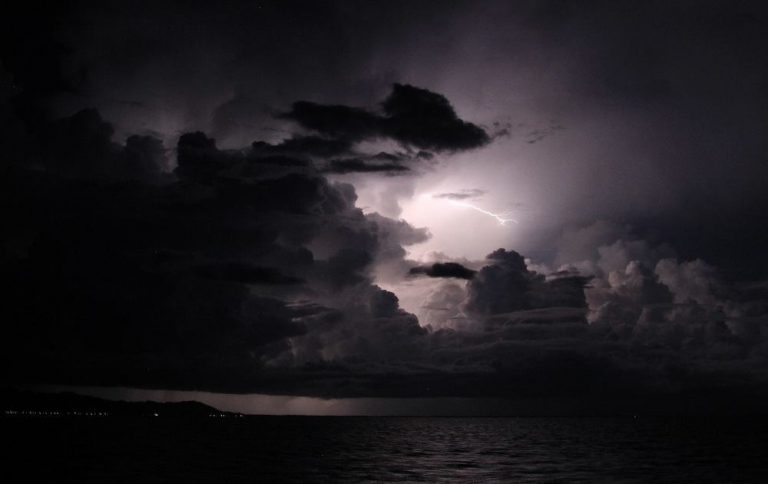It is a Friday night and I am in the control room of R/V Falkor, one the world’s most advanced research ships. Almost 40 screens show the experiments and sensors that are running as our ship makes its way slowly across the vast expanse of the Pacific Ocean. As I write this, we are nearly a thousand miles from the nearest land mass. At this moment in time the nearest humans to us are orbiting the Earth in the International Space Station, 250 miles above us.
One of the computer screens is slowly painting a picture of seabed 5000m below us. The sonar produces a 3-dimensional image of the terrain and it is currently revealing a mountain almost 2000m high that has never been mapped before. This mountain isn’t alone, and during this expedition we have mapped hundreds of previously undiscovered features – some big and some small.
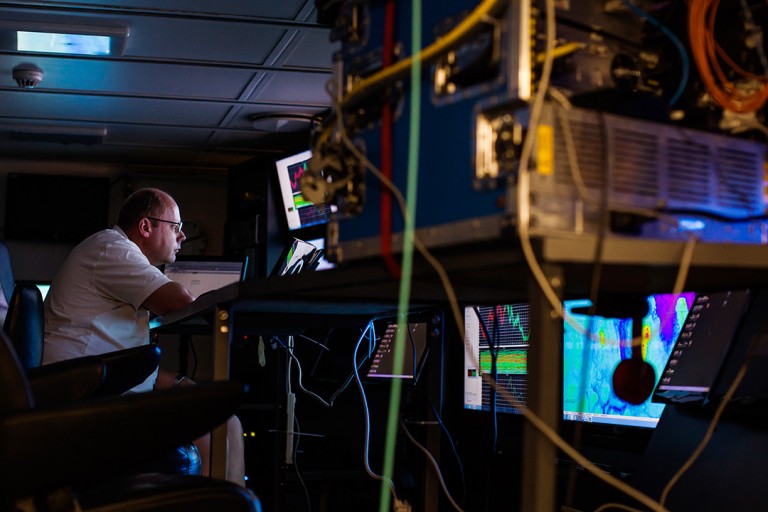
Next to the sonar screen is one of our ship’s most important systems, a high precision Global Positioning System (GPS) that records our position to 20cm (less than 1ft) – much more accurate and expensive than the GPS you find in modern phones. The GPS screen displays the ever changing constellation of satellites orbiting high above us in space. Using this system, we can document the positions of our scientific breakthroughs and new discoveries so others may study or protect them in the future.
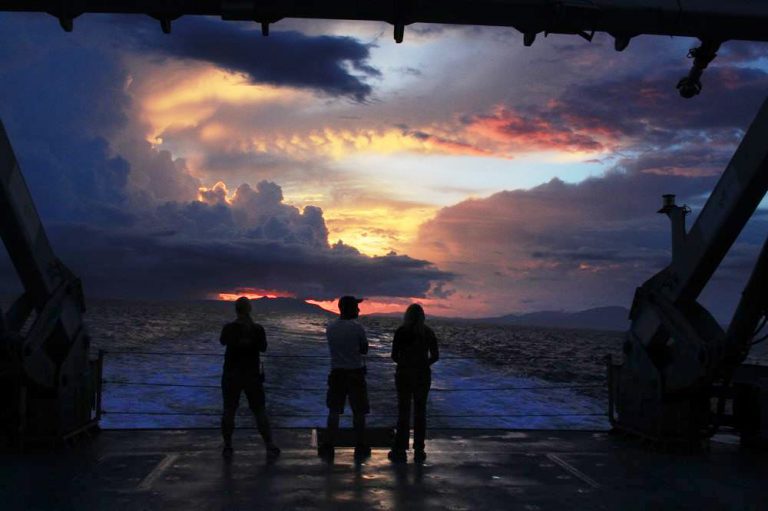
If you were to leave the control room and all its technology to go out on deck, the first thing that would strike you is the humidity – compared to the carefully controlled atmosphere of the control room the air is thick and heavy. The second thought would be the inky blackness of the night. Only a few external lights that are critical to the safe navigation of the ship are illuminated. However, even in the darkness there is still light, and if you waited a few minutes and allow your eyes to become accustomed, the full splendour of the night sky would be revealed.
As I stumble out of the door, one of the crew calls over to me. Having no night vision, I’m temporary blind. A hand takes my arm and with a few instructions guides me around the various obstacles that clutter the deck of a research ship, leading me to a place where the crew are sat out under the stars.
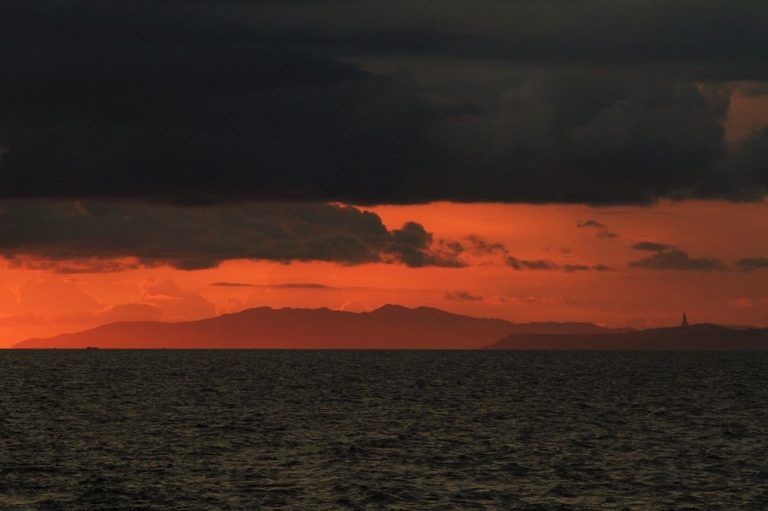
I sit down amongst the crew and listen to the conversation as my eyes begin to adjust to the light. Our ship’s crew is made up of nearly two dozen nationalities, numerous languages, various faiths and a colourful selection of backgrounds. These nights under the stars are full of debate, laughter, and a good dose of light-hearted banter. Each faith, culture and nationality in our crew looks upon the stars differently and it is those differences that make working with such a varied crew an engrossing and enjoyable experience.
Despite our individual backgrounds and beliefs, we are all passionate about the oceans. We all joined this ship to play a part in unravelling the mysteries of this planet which by chance or design man has inherited out of the dark mystery of Time and Space. Now that your eyes are becoming accustomed to the darkness, the line of the Milky Way shines brilliantly in the night sky. With each passing second more and more stars appear until the darkness becomes a background colour to the light of countless stars.
Fingers trace out the constellations and planets in different languages.
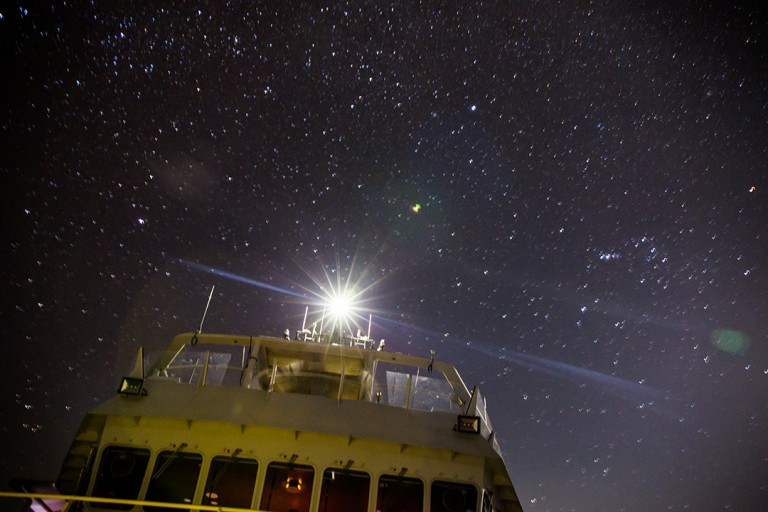
Amongst the mass of stars your eyes detect movement. A small pinpoint of light transiting with great speed amongst the blanket of stars. This light is moving too fast to be plane and not quite fast enough to be shooting stars. This is one of the satellites that bring us TV, internet and our ability to fix the ship’s position so accurately. These satellites orbit high above the earth’s surfaces at a height where they still catch the sun’s rays. They move at a steady speed across the ether and then blink out as they enter the earth’s shadow.
Then you see another and another, two traveling in a line, another two passing each other at great speed. These are just some of the many thousands of satellites orbiting the planet at a sedate 17,000 miles an hour. All of these satellites whizzing past are relatively new technologies, and even in my own lifetime, the stars once offered the best chance of finding a ships position in the middle of the ocean. Today the ancient art of Celestial navigation is a dying skill, as each generation becomes more reliant on these man-made stars that zip across the night sky. Why learn celestial navigation when even a smartphone will tell you where you are to within a few meters?
It is immense to think these stars have been used as guides and studied for hundreds of thousands of years. I think back at the explorers and settlers who have gone before us and braved the extremes in hardships that we can only imagine, as we sit surrounded by these modern luxuries. Yet today’s mission is very different. Humankind has peered at these stars for millennia as we explored the surface of our planet. We have charted the movement of the heavens, sent men to the moon and sent craft into interstellar space. The sky was not the limit! The neighbouring planets have been studied and mapped through telescopes in great detail and we know more about the surface of Mars and the moon than the seabed of our own oceans.
The very oceans that support life on our planet.
So here on our ship we turn our eyes away from the heavens and look to Earth’s little explored inner space – the ocean. Here we are guided by these satellites nestled amongst the stars, but instead of peering into the solar system we look down at our own blue planet. To understand what life may exist in the far reaches of the universe, we must first understand and take stewardship of our own planet.
That is where you find us – sandwiched between the stars above us and a land of eternal darkness below. The stars do not hold our fate, that is completely in our own hands.
